Remote work has become increasingly prevalent, necessitating a focus on best practices to ensure both security and productivity in virtual environments. Here are some key strategies we advise our clients to implement:
Use Secure Communication Tools: Implement encrypted communication tools such as Slack, Microsoft Teams, or Zoom with end-to-end encryption. This will protect sensitive information during virtual meetings and discussions.
Establish Clear Security Policies: Develop and communicate clear remote work policies outlining acceptable use of company devices, networks, and data. Employees should understand their responsibilities in maintaining security standards.
Provide Secure Access: Use virtual private networks (VPNs) to encrypt internet connections and provide secure access to company resources. Multi-factor authentication (MFA) should also be employed for added security.
Regularly Update Software and Devices: Ensure that all devices, including laptops, smartphones, and software applications, are regularly updated with the latest security patches to mitigate vulnerabilities.
Data Encryption: Encrypt sensitive data stored on devices or transmitted over networks to prevent unauthorised access. Encryption protocols such as SSL/TLS should be employed for securing data in transit.
Employee Training and Awareness: Conduct regular training sessions to educate employees about common cybersecurity threats such as phishing attacks and social engineering tactics. Foster a culture of cybersecurity awareness and encourage reporting of suspicious activities.
Endpoint Security: Implement robust endpoint security solutions, including antivirus software, firewalls, and intrusion detection systems, to protect devices from malware and unauthorised access.
Secure File Sharing: Use secure file-sharing platforms such as Dropbox, Google Drive or Microsoft Sharepoint, which offer encryption and access controls to safeguard sensitive documents shared among remote teams.
Regular Security Audits and Assessments: Conduct periodic security audits and assessments to identify potential vulnerabilities and areas for improvement in remote work infrastructure. Address any findings promptly to maintain a secure environment.
Collaboration Tools Management: Administer access controls and permissions for collaboration tools to ensure that only authorised individuals can access sensitive information. Regularly review user privileges and revoke access when necessary.
Backup and Disaster Recovery: Implement regular data backups and disaster recovery plans to minimise the impact of data breaches or system failures. Data should be backed up securely and stored in multiple locations.
Encourage Work-Life Balance: Promote work-life balance among remote workers to prevent burnout and maintain productivity. Encourage regular breaks, set clear work hours, and provide support for mental health and well-being.
By implementing these best practices, organisations can create a secure and productive virtual environment, for remote workers while mitigating potential cybersecurity risks. Constant vigilance and adaptation to evolving threats are essential for maintaining the integrity of remote work operations.



One thought on “Best Practices For Remote Working”
Comments are closed.